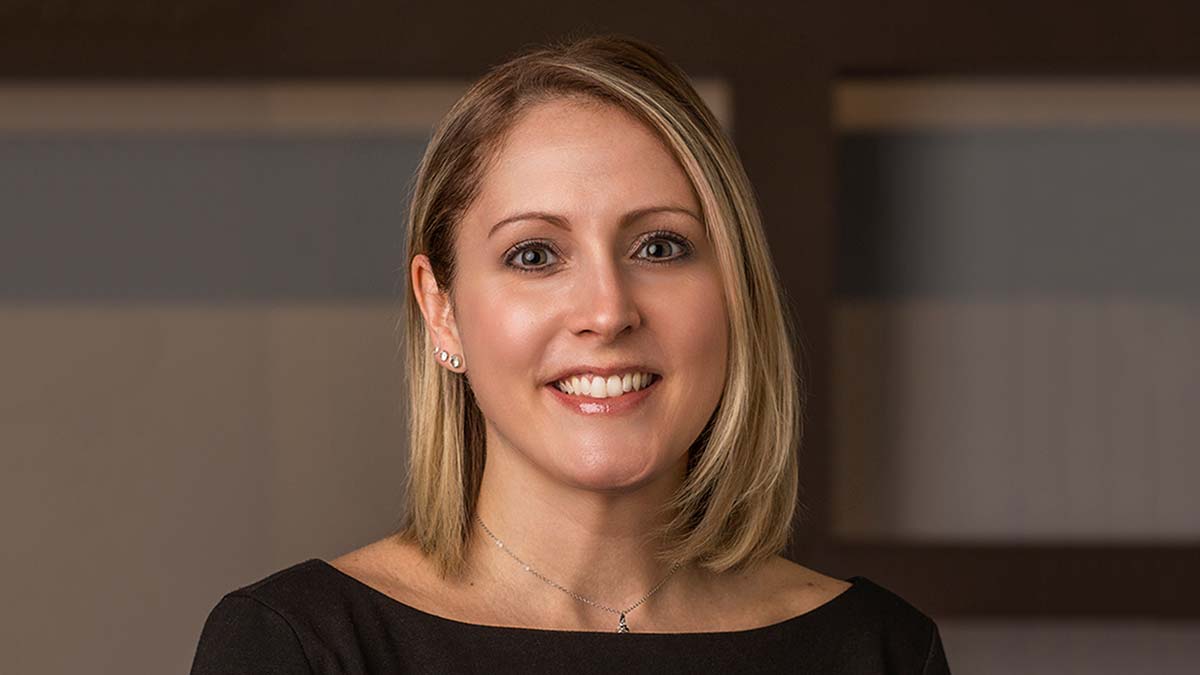
When talking about mental health, don’t use the word “institution” around Alison Leonard, Behavioral Health Design lead at The Beck Group. She thinks that term evokes negative connotations, discourages people from seeking treatment, and even talking about mental health issues.
When treatment facilities are referred to as institutions, “It makes people think that seeking help is scary and prison-like. But when they are designed thoughtfully, they are places of hope and feeling and transformation,” says Leonard.
Leonard wants people to think of treatment centers simply as a place you go to get well.
But the fact is, patients and families often suffer from a fear of the unknown with treatment centers. Healthcare designers and architects can help ease some of that fear.
Leonard points out that facilities traditionally locate their mental health treatment areas in the backs of buildings or in basements, hidden away from the general public. This doesn’t help ease anyone’s fear or stress.
Close your eyes for a moment and try to imagine what it would feel like to enter this environment. You’re walking down a long corridor tucked away in the bowels of the hospital. Ahead of you are double security doors with a sign stating, in big, bold letters: “Psychiatric Crisis Unit.” What is your stress level, whether you are imagining yourself as a patient or a family member?
“When you put yourself in your patient’s shoes,” says Leonard, “it’s easy to design a less intimidating treatment facility.”
“What I really try to focus on is how patients and their families and friends feel approaching the building and how they feel through the intake process,” says Leonard. “By paying a little more attention to that and giving it a therapeutic and hospitable feeling.”
Focus on designing this area just like any other doctor’s office, suggests Leonard. She admits that, while it is a delicate balance, it is possible to use welcoming colors and comfortable furnishings while ensuring the safety of staff and patients.
She also advises facilities to consider the people bringing their loved ones in for treatment. Many adolescent or pediatric in-patient facilities need to be able to accommodate parents or guardians overnight. This allows the family to stay connected while also giving them the privacy they need during the day to focus on getting well.
What I really try to focus on is how patients and their families and friends feel approaching the building and how they feel through the intake process.”
Another way you can accommodate the families’ needs is by providing special waiting rooms for parents who need to bring their other children with them. An area for those children with toys and books to occupy them can eliminate a lot of stress on the parent.
Leonard stresses that it’s important to give patients choices. Something as simple as the ability to open a window when they want, control the temperature of their room, or the option to choose a color scheme can go a long way towards promoting healing. It allows them some sense of independence and dignity on their path to recovery.
Spaces should be designed where patients can go to interact one-on-one or as a group depending on their mood. Quiet spaces where they can go to read, study, or reflect should be provided so patients don’t feel confined to their rooms to maintain privacy.
The staff should also be a consideration in facility design. ”There is a lot of conversation taking place about whether care stations should be fully closed or open. I think it’s possible to have a mix of both, maintaining safety for the staff and patients while projecting an open, trusting environment,” says Leonard.
Whichever scenario or mix you choose, Leonard emphasizes the importance of involving all stakeholders in the design process. From mock-ups using 3D models to building rooms or patient care units out of cardboard, everyone should be allowed to be heard.
I think that artificial intelligence can help analyze data and possibly predict some patterns in patient behavior and to detect warning signs that could save someone’s life.”
We asked Leonard about using virtual reality to create digital twins of patient rooms and other accessible areas, but she felt that a physical mock-up works better: ”The sense of touch and spatial awareness that comes from a real room, even when designed with cardboard, is essential.”
However, she does think that tech has a vital role to play in mental health. An example she gives is telemedicine, which is helping many people who would not otherwise have access to the care and support they need.
For now, Leonard has not decided where she stands on AI. “I think that artificial intelligence can help analyze data and possibly predict some patterns in patient behavior and to detect warning signs that could save someone’s life.”
She thinks what people are struggling with is that AI can be very black and white. AI can analyze things like radiology reports with much more precision than people, but the mental health treatment process is not so black and white. Personal warmth and connection—even through a computer video call—is an integral part of the healing process. AI may be able to assist in spotting patterns that guide a treatment practitioner’s plan, but it isn’t a substitute for personal connection.
“I am very interested in seeing if AI can incorporate emotional intelligence—the ability to understand someone’s tone of voice or body language. But I do think that very soon AI will play a role in how treatment plans are made,” says Leonard.
On the low-tech side of behavioral healthcare, but crucial to a safe environment, are ligature-resistant products. Leonard has participated in a variety of product testing as a behavioral health planner—including working with Whitehall in a dedicated focus group.
“Whitehall has always taken constructive criticism to heart and paid attention to what we were saying. As a result of that, they have designed great products. The focus groups you are putting together to develop new products are important; kudos to you for putting in the time and effort into that.”
You can find more of her exciting work in behavioral healthcare design at The Beck Group.

[…] — Alison Leonard, AIA EDAC, Cannon Design […]